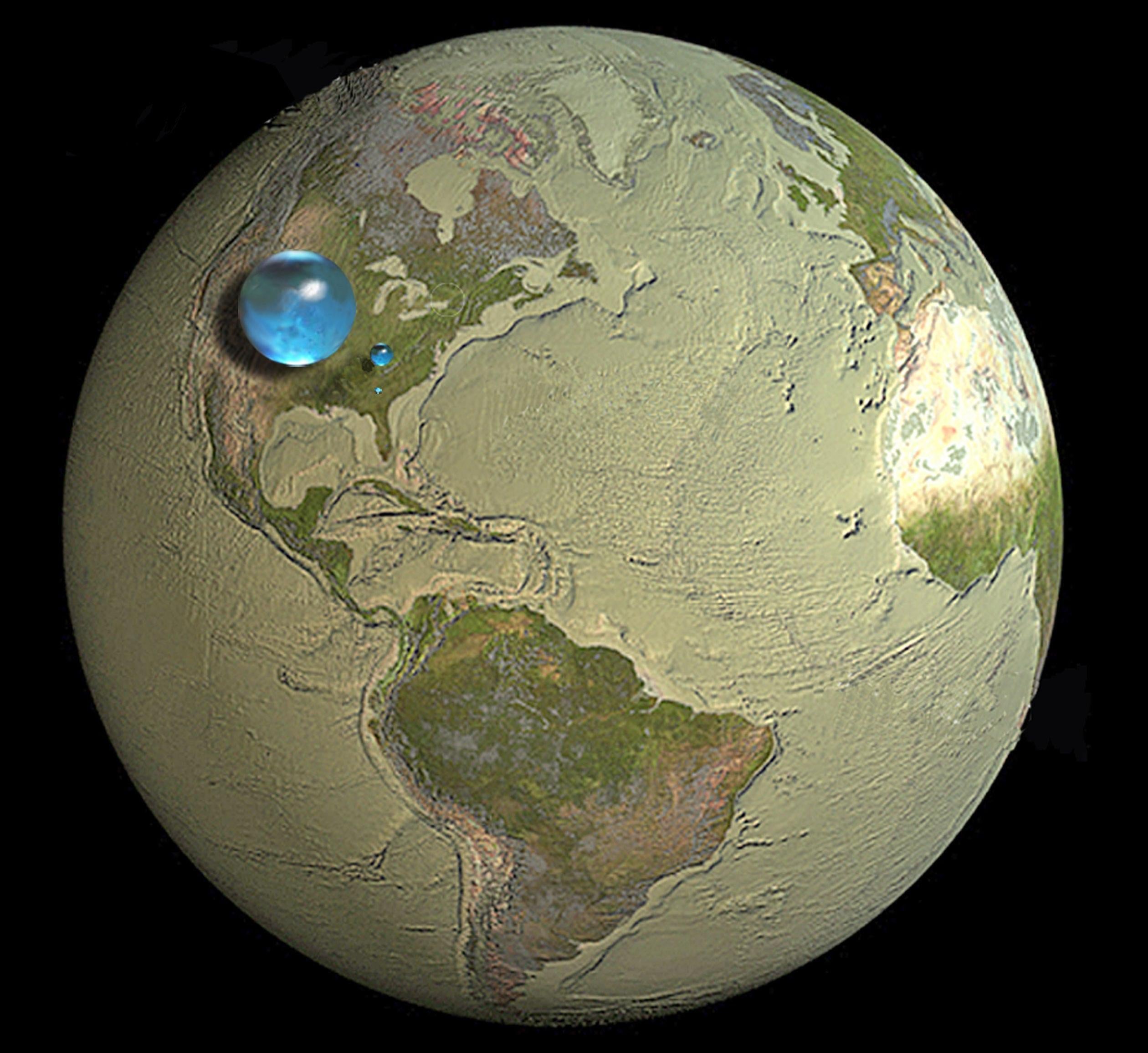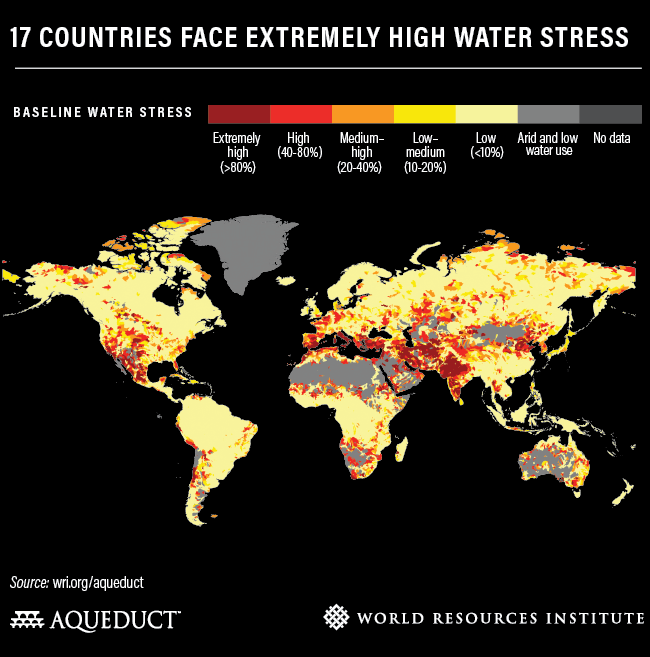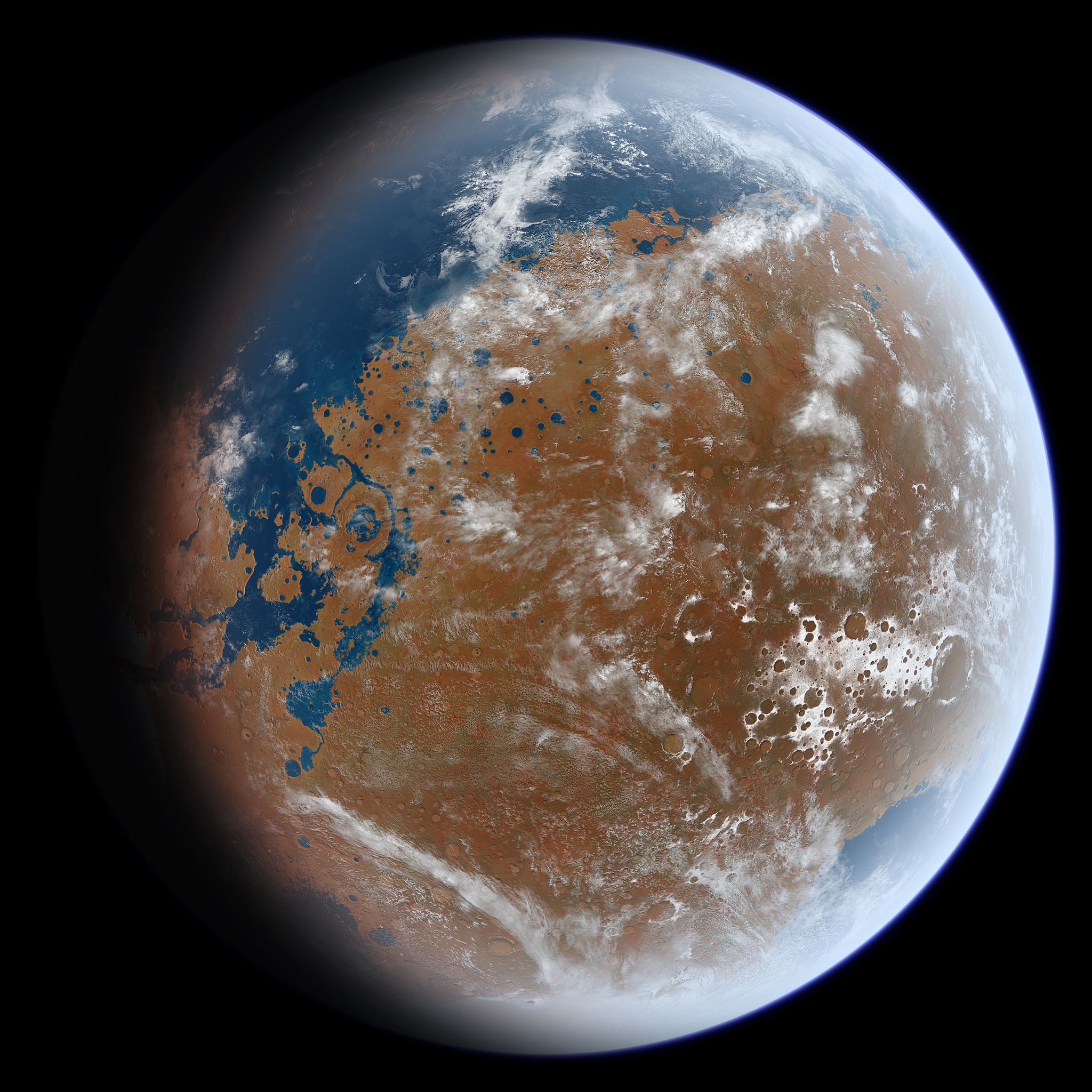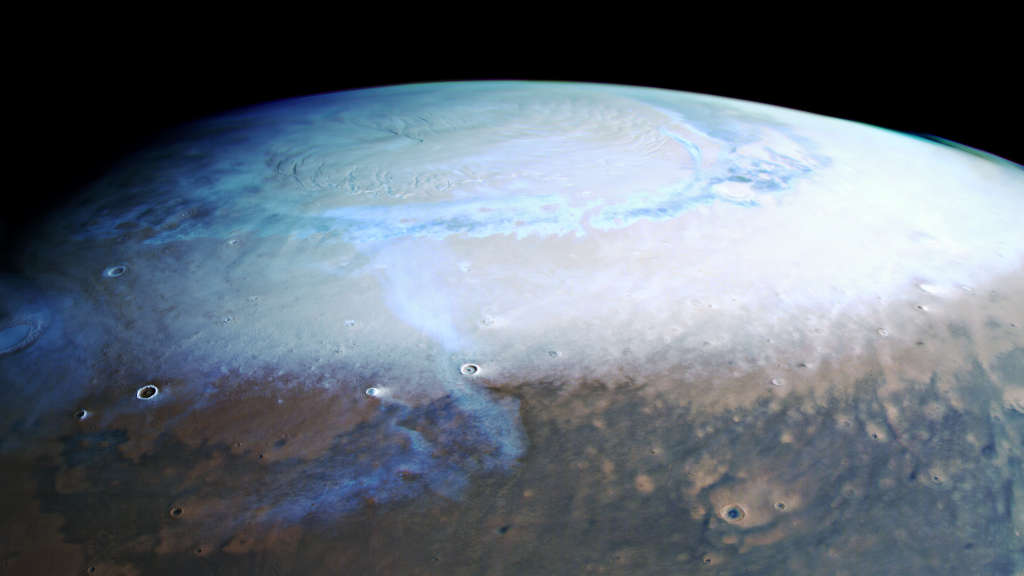The latest iteration of Dune, set to hit theatres on December 2, will serve as a potent reminder of our troubled relationship with water, particularly as we manage the catastrophic effects of climate change and increasingly venture out into space.
Most of the story takes place on Arrakis, a desert planet inhabited by a fierce indigenous group known as the Fremen. These people have adapted to the harsh conditions on Arrakis, finding ways to conserve even the tiniest drops of water, while making the wasting of water a literal crime against humanity.
While reading Dune as a 16-year-old, I suddenly developed a surprisingly low tolerance for the wasting of water. I took shorter showers, finished every glass of water, and refused to let the tap run for any longer than required. Even rainy days started to feel different, and not such an intrusion. The novel tends to have that effect on people, owing to its portrayal of extreme water scarcity and the radical measures taken to sustain life on a desert planet.
A key technological adaptation is the stillsuit. This full-body outfit preserves as much of the body’s moisture as possible, allowing the Fremen to venture out into the desert. As Liet Kynes, the fictional ecologist of Arrakis, said: “With a Fremen suit in good working order you won’t lose more than a thimbleful of moisture a day.”
Even after death, a Fremen is expected to donate their body’s water to the group, in what is a very important funerary ritual. As the Fremen saying goes, “A man’s flesh is his own; the water belongs to the tribe.”
So rare is water on this planet that the Freman can scarcely imagine tales of lakes and oceans on other worlds. To them, it’s the stuff of fantasy. For us on Earth, however, it’s very much reality. And wow, do we ever take our water for granted.
Our soggy but inequitable world
Indeed, Earth is nothing like Arrakis, as water covers over 70% of our planet’s surface. Most of this is the salt water in our oceans (96.5% to be exact), but if all the fresh liquid water on Earth was gathered together, it would create a sphere measuring 272.8 km in diameter, according to the U.S. Geological Survey.

Water, an indispensable requirement for life, is not equally distributed around the world. Earth is no Arrakis, but some people live in places that are becoming increasingly Arrakis-like. The World Resources Institute estimates that 1.8 billion people — a quarter of the world’s population — inhabit countries that experience water stress. The Middle East and North Africa are among the most water-stressed places on Earth, but the U.S., with 10 states categorised as experiencing high or extreme water stress, is not immune.
A stark reminder of America’s water inequities occurred this past summer, when the Colorado River system, the largest water supply system in the West, experienced its first-ever shortage. Declining access to freshwater is the result of pollution, extreme heat and drought, and the overuse of water for agriculture and other purposes.

Globally, the situation is only going to get worse. A 2019 report by the Intergovernmental Panel on Climate Change warned of ongoing desertification as the result of frequent heat waves. From 1961 to 2010, the advance of deserts in dryland areas increased by approximately 1% each year, and some 500 million people have been affected by desertification since 1980, according to the report. The IPCC says changes to land use, including deforestation, have exacerbated these climate trends, particularly in south and east Asia.
There’s plenty of water on Earth — it’s just notoriously difficult and expensive to transport. A potential solution to the problem is industrial-scale desalination, in which salt is removed from ocean water. The good news is that desalination plants can run on solar power, so it’ll likely be only a matter of time before we see wide-scale adoption.
“I am a desert creature”
Osvaldo Sala, an ecologist from the School of Life Sciences at Arizona State University, appreciates how much the upcoming film could influence public opinion on matters having to do with water scarcity and our approach to dryland areas.
“Water allocation is a complicated legal issue that’s driven by high-level politics,” he explained in a video call. “This issue is mostly driven by our values and political power, but we have a more humble message.”
That message, he said, is that deserts are not empty, nor are they devoid of value. Drylands, he explained, “are very diverse from a biological point of view,” featuring many animals, plants, and microbes. Deserts, he added, are also culturally rich. Instead of misusing or ignoring deserts, we should work to preserve them and ensure their ecological sustainability moving forward.
It’s a message the Fremen would most certainly rally behind. The Fremen, despite their hardships, have adapted to and even celebrate their sand-filled world. As Herbert writes in Dune, “Polish comes from the cities; wisdom comes from the desert.”
Celina Osuna, assistant director at the Desert Humanities Initiative, said there are lessons to be learned from the Fremen approach, such as viewing water and not the spice melange — the enabler of faster-than-light travel in Dune — as the most valuable resource on Arrakis. Osuna notes that the canal system upgraded by the Salt Water Project of Arizona was originally built by the Hohokam people.
“This canal system is based on the contributions of Indigenous people, and these stewards are still around,” she said. “Their world views are crucial for understanding deserts in less exotic ways — that is, as our homes, and as places where we can adapt and thrive.”
Space is a thirsty place
For most of us, water is ubiquitous, and we forget how difficult it might be to access water when living and working in space. It’s tough to transport water even here on Earth’s surface, and even tougher to transport it to beyond our gravity well owing to its tremendous weight and bulk. For crew members aboard the International Space Station, this has resulted in an approach to water that can only be described as very Fremen-like.
“We recycle about 90% of all water-based liquids on the space station, including urine and sweat,” NASA astronaut Jessica Meir explained in a September 2020 article. “What we try to do aboard the space station is mimic elements of Earth’s natural water cycle to reclaim water from the air. And when it comes to our urine on ISS, today’s coffee is tomorrow’s coffee!”
Liet Kynes, the fictional ecologist of Arrakis, would be proud of this approach and of NASA’s Environmental Control and Life Support System, which makes the recycling of water possible. In addition to urine and sweat, the Water Recovery System recycles the water used for showers and the moisture produced by breathing.
ISS astronauts aren’t equipped with Fremen stillsuits, so the recycling of urine is a bit more involved. The urine that’s gathered is pumped into a distillation assembly, where a centrifuge forces the urine to its outer walls. The urine is heated, causing water to evaporate from the waste. Condensation then returns the vapour to a liquid state. This still-unclean water is pumped into a tank, where it mixes with other recovered water, such as sweat and cabin moisture. Pressure in the tank removes any stinky gas from the liquid, which is then delivered to a reactor that kills unwanted organic compounds and microorganisms with intense heat.
The process provides upwards of 3,600 litres of recycled water each year. Recent upgrades to the system mean that overall water recovery is approaching 94%, which is damned impressive. That said, NASA is striving for 98% total recovery as it prepares for the Artemis missions to the Moon and an eventual crewed mission to Mars. NASA says the same tech could be used on Earth in places where water is scarce — a prospect that’s both futuristic and dystopian at the same time. In case you’re wondering, faecal waste is not processed, but NASA is looking into that possibility.
NASA’s Water Recovery System is not a straightforward solution, and it’s a reminder of the hoops we have to jump through to provide water to people living and working in space. Which brings us to Mars.
Welcome to Arrakis — er, Mars
With its two moons and sprawling deserts, Mars is probably the most Arrakis-like planet in our solar system. And like Arrakis, the fourth planet from the Sun is seriously lacking in accessible water.
This wasn’t always the case. The Red Planet was once accented in blue, as sprawling oceans covered the surface over a billion years ago. Much of this water was lost to space, but a good portion of it managed to stay behind. There’s so much ice at the polar caps that, if it all melted, the resulting water would cover the planet to depth of 65 feet (20 meters), according to Stefano Nerozzi, a postdoctoral research associate from the Lunar and Planetary Laboratory at the University of Arizona.

Nerozzi says Mars is a hyper-arid desert by Earth’s standards.
“Due to the very low atmospheric pressure, water can only exist as vapour or ice near the surface,” he explained in an email. “The atmosphere is extremely dry, containing only a tiny fraction of the water vapour compared to Earth’s, far too little to extract any meaningful amount. In fact, water management on a Martian human base will need to be extremely strict to preserve what is likely the most precious resource on the planet — just like a sietch on Arrakis!”
Interestingly, research from 2020 suggests liquid water may lie buried at the Martian south pole, but this work remains controversial. If it is liquid, however, this water is probably very slushy and salty.
Researchers with the Subsurface Water Ice Mapping (SWIM) team have used satellites to find likely places where buried ice might be located on Mars — work that’s being used to support the selection of future landing sites. Matthew Chojnacki, a research scientist at the Planetary Science Institute, said these scientists “really did an excellent job of identifying subsurface frozen water ice across the northern mid-latitudes of Mars that could benefit future human explorers.”
Chojnacki and his colleagues at PSI are hoping to conduct a follow-up study in which they would map water-ice indicators, such as polygon-shaped terrain, glacial-like landforms, and concentric crater fill.

That water will be needed on Mars is obvious. Colonists will need to quench their thirst, grow crops, and process water into fuel for rockets. Trouble is, shipping water to Mars from Earth would be an awkward, time consuming, and — most importantly — prohibitively expensive ordeal.
More realistically, colonists will have to source water directly on Mars. Settlements might have to be built near the polar regions, allowing for quick access to the Martian ice sheets. This water probably won’t be immediately potable, requiring desalination and other measures to remove dust and ensure purity.
“Mars is hard, Mars is dry!” Chojnacki wrote in an email. “It’s going to take a big effort to actually make these ‘resources,’” he said. “While human Mars mission plans are still in the conceptual stage, accessing and utilising that water will be a daunting challenge.”
Nerozzi said the polar caps “are some of the most inhospitable places on its surface,” which means “any future human explorers are more likely to settle closer to the equator, where the climate is warmer and more forgiving.” Problem is, sources of water near the equator are quite scarce.
“The soil is usually very dry, although in some places there might be hydrated minerals that hold water in their crystalline structure,” Nerozzi explained. “This water is difficult to extract, but not impossible: humans would need ovens to break the chemical bonds of water in hydrated minerals and a condensation and filtration system to make it drinkable.”
Debris-covered glaciers in the mid-latitudes could provide other sources of water, though settlers would likely have to use heavy excavation equipment to reach the concealed ice. Nerozzi said the “terrain on these glaciers is very rough to even walk on, making these abundant water ice reservoirs very difficult to access.”
Failing this, deliquescence might be another option for the prospective colonists, in which water is collected from the atmosphere similar to the fictional moisture vaporators in Star Wars (George Lucas, it needs to be said, borrowed heavily from Dune, which Frank Herbert published in 1965). Offworld, industrial-scale deliquescence remains within the realm of science fiction, and it’s not immediately clear if the Martian atmosphere can generate the required volumes of water.
Indeed, there’s still much we don’t know about how and where we’ll source water on Mars, but it’s a problem in need of a solution.
“Tell me about the waters of your birthworld”
Dune serves as a reminder that we should never take water for granted. Sadly, our species is increasingly dealing with water insecurity, frequent heat waves, and burgeoning rates of desertification.
Human-induced climate change has a lot to do with current environmental problems, and the result is that tiny versions of Arrakis are appearing across the globe. As Dune reminds us, we probably won’t find it easy to seek shelter in outer space, as the cosmos is filled with inhospitable hellscapes. So we must take care of Earth — the most valuable planet in the known universe. And not let our fear get the better of us.
